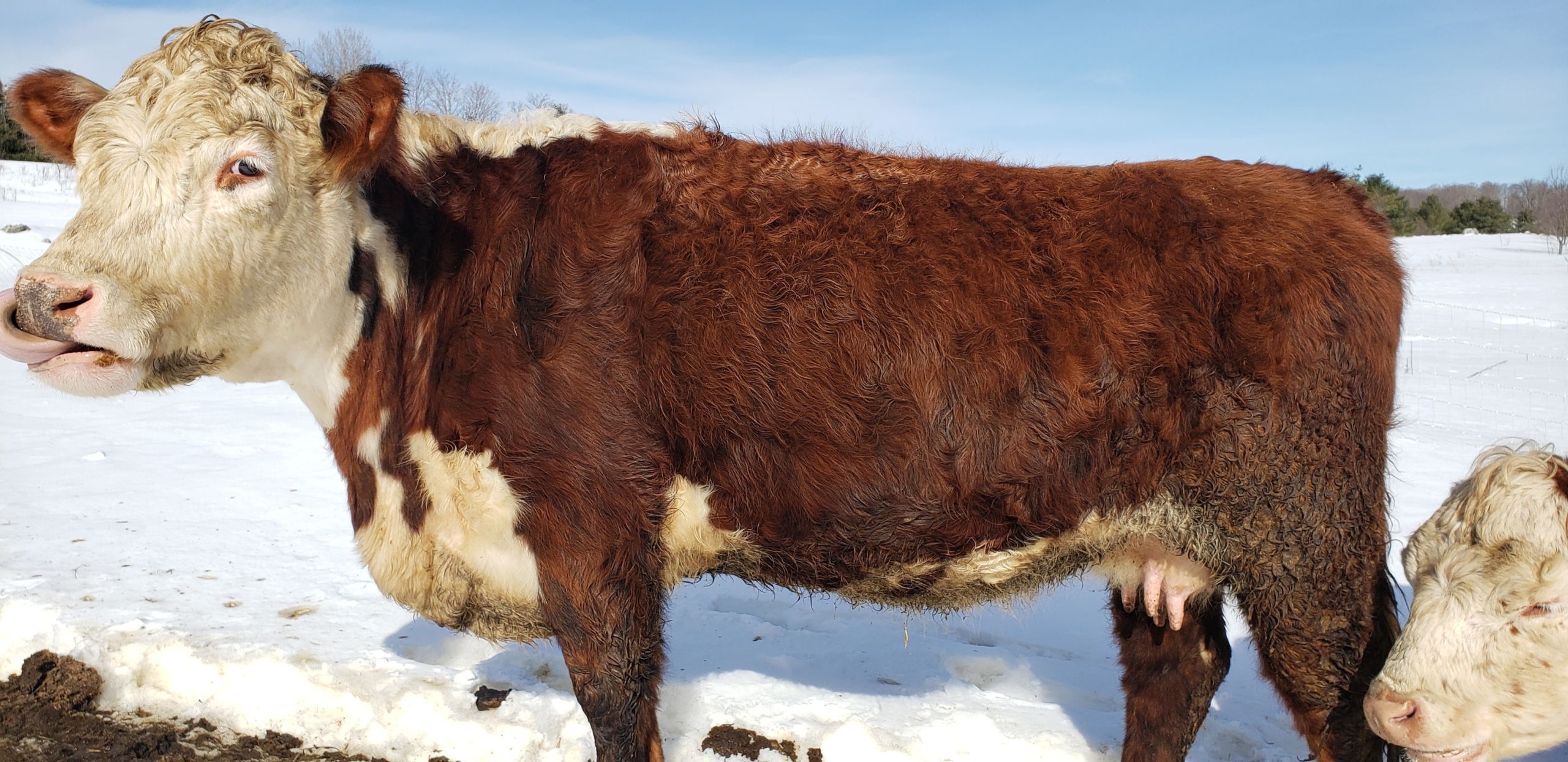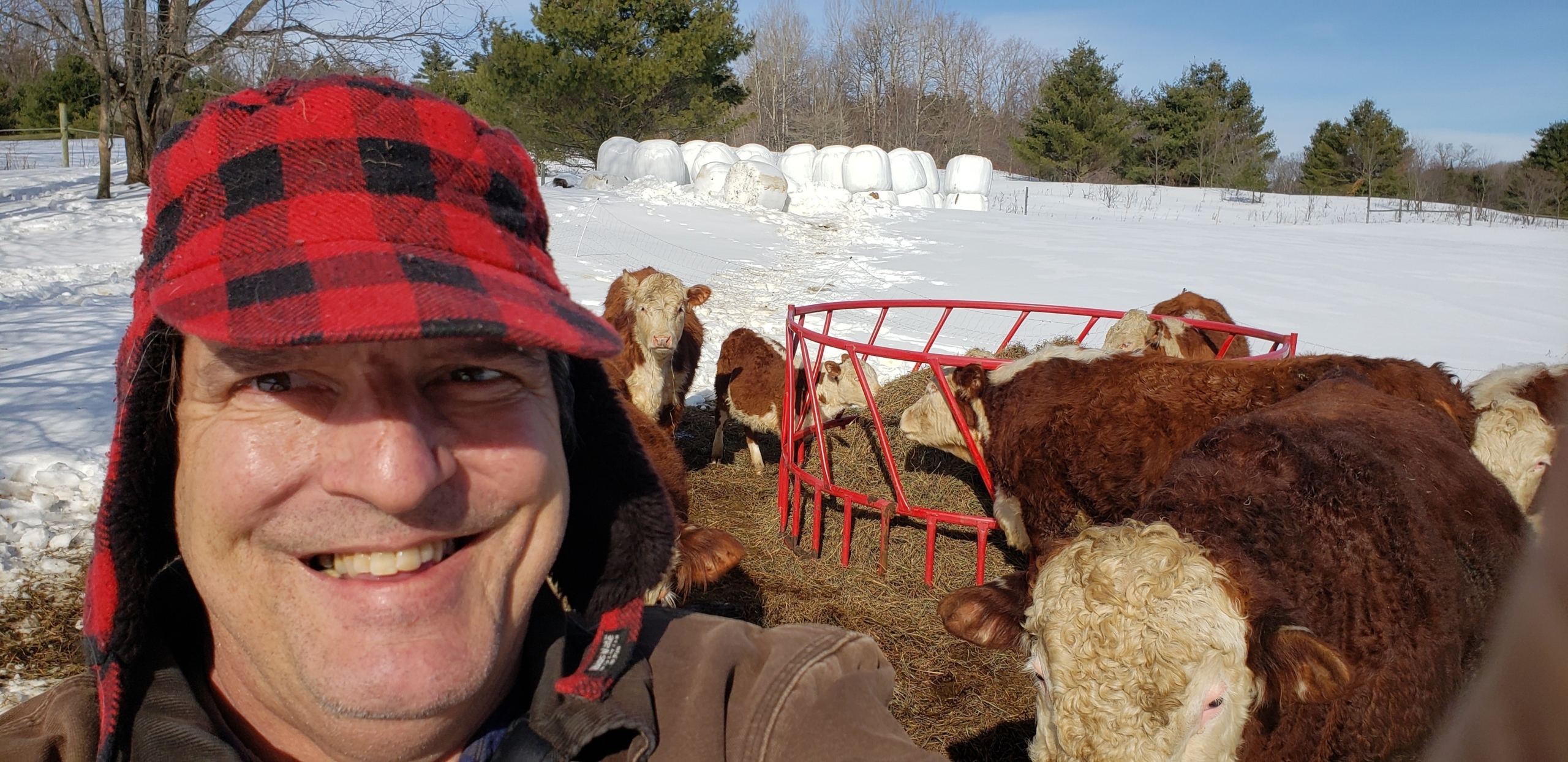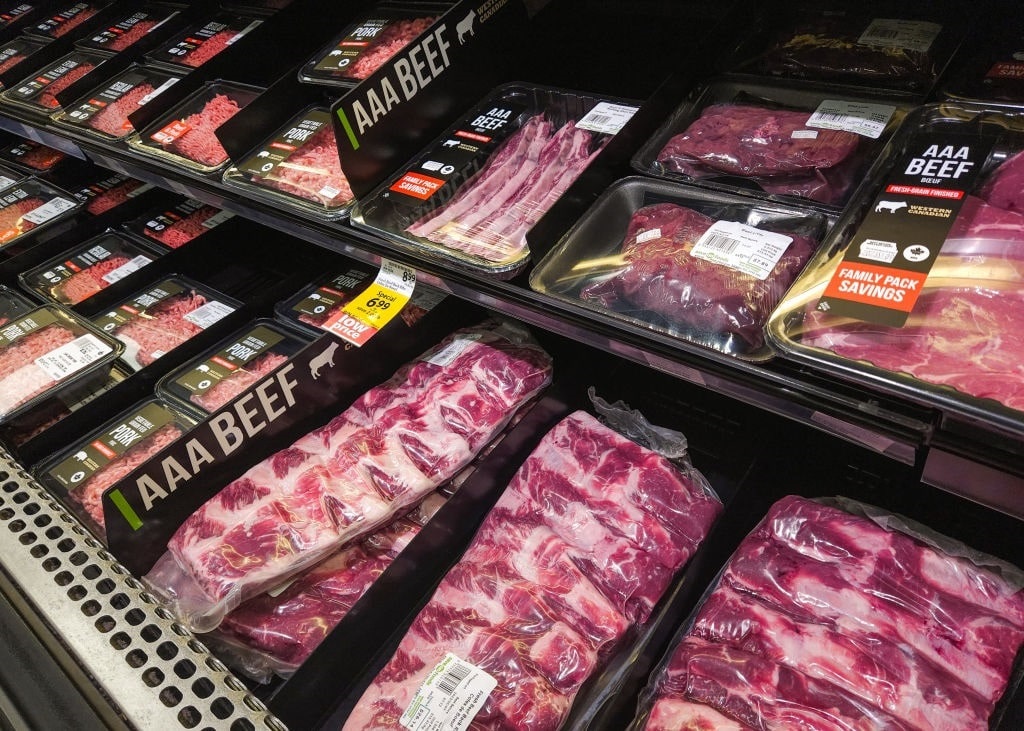Live cattle prices are racing for the sky, up nearly 12% in the previous two months. Most forecasts predict increasingly high beef prices in 2024 as ranchers strive to rebuild herds depleted by the double whammy of drought and the pandemic. As farmers rally across Europe and American consumers helplessly watch their grocery tabs soar, food prices are likely to continue their rise. This is especially true for beef, and here’s why.
An increase of a few pennies per pound for the price of a large animal may seem insignificant, but “live weight” sales of cows compound through processing: Only about a third of the bovine makes it into human larders. Additional impacts on the consumer’s price tag include costs of slaughter, processing, packaging, and distribution. All of these have inflated, but beef prices are poised to bloat further.

John Klar’s cow, “Brindy.” (Liberty Nation)
Those pennies add up very quickly. Live beef prices were $1.62/pound for cattle on Dec. 7, climbing nearly 5% to $1.70 on Jan. 8, and 11.7% by Feb. 2, when the market closed at $1.81. This is merely six pennies away from last November’s $1.87 per pound, the highest price for beef in US history. Moreover, the latest jump represented four cents (2.47%) in two days: If such beef inflation persisted, the live weight of a cow in a year would approach $9 per pound. That seemingly small increment in live animal prices thus signals a powerful market move.
Where’s the Beef?
Like all commodity markets, beef prices are subject to various factors, and price shocks can occur due to disease, environmental factors, geopolitical turmoil, sharp shifts in consumer demand, or international trade agreements. Underlying these variables in 2024 are somewhat novel industry conditions that relate to herd size, drought, and economics. America is literally short of cows. These agricultural realities promise sustained high beef prices through 2024 and 2025.
During COVID-19, many US beef slaughter and processing facilities shut down, backing up inventories of American beef awaiting slaughter. A crushing drought concurrently drove up feed prices, withered pastures (requiring the purchase of yet more pricey feed), strained animals, and dried-up water supplies. Many farms liquidated cows and other livestock prematurely even as they plowed wilted feed crops into the ground. Texas farmers sold off an estimated 50% of that state’s cow herds in 2022; New Mexico reportedly reduced herd size by 43% and Oregon by 41%. Many farmers around the nation simply sold up and stopped rearing cows.
USDA reports that America’s beef herd numbers are now lower than they have been in five decades. These modern cows boast improved genetics over the bessies of our forebears due to selective breeding, offering significantly higher slaughter weights. However, the dramatic reduction of US cow numbers will not be rebuilt without a short-term leap in prices.
Meat Alternatives
Chickens for the American dinner table can be raised from chick to plate in a matter of a few months, and hens lay eggs nearly daily. Pigs yield large litters twice annually, and their young are raised for market in four to five months. Sheep generally deliver twins or triplets, ready to eat in four months to a year. Cows are very different animals, and their flesh cannot be accelerated to market like manufactured goods when consumer demand increases.

John Klar (Liberty Nation)
A cow’s gestation period is 285 days (nine and a half months) compared to a pig’s 114 days and a sheep’s 147 days. Cows rarely have twins, and that single calf for meat will take two years on grain to raise to slaughter weight, adding another six months for grass-fed. Drastic shocks to beef ranching thus require a longer time for rebound than other livestock farming, and this shock has been drastic. As prices rise, farmers will hold back cows and heifers (young female calves) for future breeding programs as they have already lost breeding stock. New market entrants will seek breeder cows, while many consumers eyeing nosebleed steak prices will seek an animal to fence into a few acres for their own use if they have the space. Meanwhile, strong milk prices mean fewer dairy farm culls for the meat-packer.
Demands for replacement breeding stock will thus compound beef price increases, creating a vicious market cycle as animal scarcity for both grocery stores and farmyards fuels a buying frenzy usually reserved for real estate bubbles and Beanie Babies. But cows are food, and Americans have a thing for their burgers and fries. They will keep paying the higher prices.
Food Inflation Widespread
Although beef prices have rocketed 30% higher since February 2020, pork is up 27% and chicken 45% (and eggs 50%). Relative to other meats, beef remains competitive. As beef prices climb moonward in 2024 and beyond, Americans will still want their barbecued favorites. Studies show consumers desire quality beef cuts to replicate restaurant dining at home. They seek “value,” and they value beef every bit as much as the developing populations that consistently increase their beef consumption as soon as it becomes economically affordable. (That growing demand, too, continues to boost prices.)
Fake meats will not assuage meat-eating tailgaters at NASCAR races and football stadiums: Even vegans are becoming disenchanted with the stuff. Highly processed meat alternatives are not competitive on taste even if they do manage to compete on cost. People are becoming aware of the health benefits of red meats (especially grass-fed) as opposed to high-carb diets, and it is unlikely they will ever prefer a cricket burger with fake beet juice masquerading as blood over a quarter-pounder with cheese. Synthetic meats might offer an alternative, except the industry has been hopelessly stalled by problems delivering edible products at cost or scale. It is light-years away from meeting the growing meat demand.
 European farmers have vocally risen up against ill-conceived agendas by governments to reduce cow numbers and shutter farms. American consumers largely insulated from the travails of their native food growers will doubtless be gaining a crash course in the life cycle of cows in 2024, as the reality that one cannot quickly rebuild devastated herds impacts supermarket checkout counters. So, too, will the calls to eliminate gentle cows be brought into greater political relief as tension rises between the human palate and technocratic climate cult fantasies.
European farmers have vocally risen up against ill-conceived agendas by governments to reduce cow numbers and shutter farms. American consumers largely insulated from the travails of their native food growers will doubtless be gaining a crash course in the life cycle of cows in 2024, as the reality that one cannot quickly rebuild devastated herds impacts supermarket checkout counters. So, too, will the calls to eliminate gentle cows be brought into greater political relief as tension rises between the human palate and technocratic climate cult fantasies.
Outlook 2024
Many variables still bear on the future of beef prices. The USDA intends to open US beef markets to Paraguayan cows, which could serve either as a pressure valve against price shocks by procuring additional ready-for-table inventory or a complete tire-popper if dreaded hoof-and-mouth disease infects US herds via the Paraguayan vector. Mild winter weather would help fatten cows and reduce feed costs. Conversely, brutal cold snaps deter weight gain and increase input costs. The colder it gets, the more cows eat and the harder it is for them to maintain their condition.
Amid these unforeseeable variables remains a predictable shortage of animals that will persist as ranchers scramble to meet consumer demands for quality beef products. Imported animals and drought-cushioned prices for two years while quietly seeding the current shortfall. Consumers will not be over the moon at the news, but hamburger is likely to remain pricey until the cows come home.




